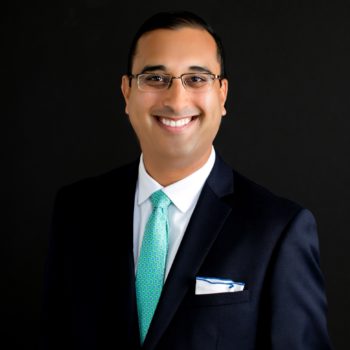In the middle of the 19th century, the likelihood of death during childbirth was extraordinarily high. In Vienna, two maternity wards, one staffed by male doctors and one staffed by female midwives had vastly different mortality rates: the ward staffed by male doctors was five times worse than the other.
That is until Ignaz Semmelweis. After months of trial and error, he discovered a solution that would reduce mortality rates to 1-2%. His radical solution was for the male doctors to wash their hands.
And yet, the simple solution was soundly rejected. Theories abound as to why the doctors refused to adopt the practice even though it clearly worked. What we do know, and what’s now called the Semmelweis Reflex, is the tendency to reject new evidence or new knowledge because it contradicts established norms, beliefs, or paradigms.
Reflecting on the Center for Effective Philanthropy (CEP)’s new report, Foundations Respond to Crisis: Lasting Change, the question before everyone in the philanthropic sector is how to persist in this meaningful change. The study points to a deeper understanding of the need for unrestricted funding and racial equity. These changes were precipitated by specific events, namely a global pandemic and instances of race-based violence. In these heightened moments of concern, the response from many foundations has been swift and significant. However, as concerns about the pandemic wane and overt incidents of racial violence subside, there is a great risk of a return to “normal” practices.![]()
Semmelweiss holds some clues to creating this change. While he failed at implementing handwashing in Vienna, some years later, the Crimean War created a new opportunity to revive the practice. A nurse named Florence Nightingale picked up the data and validated handwashing with increasing adoption by doctors. In this case, rather than indicating that doctors were causing the death of their patients, Nightingale reaffirmed the collective problem of patient mortality and framed the practice of handwashing as an opportunity to work together for better outcomes.
It can seem easy to define the problem, cause, and solution in narrow terms. In doing so, our discussions do a disservice to civic responsibility by pitting two actors against one another. Instead, it is important for both nonprofits and foundations to use a critical lens to interrogate established norms, beliefs, or paradigms to work together for the common good — a process at the heart of creating lasting change.![]()
Foster partnerships, not power dynamics.
First, both foundation and nonprofit leaders may find it difficult to obtain unbiased feedback about their operations or processes. Since funders might not receive candid feedback positively, nonprofits do not often provide meaningful criticisms of foundation practices. This can result in false indications that practices no longer need improvement. When funders hold exclusive access to the vital resource that nonprofits need, the imbalance of power can adversely impact a whole series of outcomes.
For nonprofit leaders, it can be difficult to hear that their current practices need to be reformed. Nonprofits are not immune to appropriate criticism, including a recent AFP/Ohio State study on workplace bullying. Since nonprofits know that they are doing good and important work on a daily basis, it can seem like external feedback from funders is an unwarranted criticism. While nonprofits are more attuned to the needs of beneficiaries, they may have a limited perspective in other areas for a wide variety of reasons and have opportunities for continuous improvement.
To continue positive change, foundation leadership should identify opportunities for comprehensive and anonymous feedback from grantees and prospective grantees. Ideally, foundations should share their challenges and opportunities for continued change to enable positive externalities from such feedback. Likewise, nonprofits should view funders as a resource beyond simply financial capacity. While funding is an important first consideration, it is only a starting point to engage funder networks to expand knowledge, capacity, and thought-partnership. As partners in impact, both foundation and nonprofit leaders need to work from positions of trust and collaboration. The perspective that one entity is the absolute expert in their respective arena undermines beneficiaries.
Challenge paradigms and mindsets that do more harm than good.
Second, the philanthropic sector derives significant norms and practices from the business world. Often the paradigmatic thinking is that if nonprofits conducted themselves more like businesses, they would be more successful. Of course, this pervasive thinking exists in both nonprofits and foundations.
Some leaders come from a monopolistic competition — a mindset that prides itself on creating efficiencies and scale. The challenge is that in most philanthropic issues, efficiency is the cause of, not the solution to, the problem. Efficiency by its nature excludes the inefficient. This is why, for all its benefits, markets actually create and exacerbate numerous social issues. It’s not profitable to work with indigent populations. Such an approach is ill-equipped to address problems that defy market conditions. The problem of poverty, for example, is multifaceted, systemic, and messy.
From a nonprofit perspective, this business-analogue thinking is evident in problematic fundraising and human resources practices. Fundraising or programming goals are routinely increased without correlation to increases in salaries or other resources. The entire philanthropic sector suffers under this pernicious mentality, as evidenced by a vicious cycle of under-resourcing and limited impact.
Funders should lead the way.
To further positive change, both foundation and nonprofit leadership should identify how existing paradigms affect their decision making and collaboratively dismantle these norms.![]() Foundations have an opportunity to serve as a first mover by leaving behind antiquated practices. As some funders have indicated this as a priority, the next step is to lean into and model this process even further rather than focusing on their own grantees exclusively. Foundations are more apt to listen to peer executives, especially if they are not creating the same feedback loops.
Foundations have an opportunity to serve as a first mover by leaving behind antiquated practices. As some funders have indicated this as a priority, the next step is to lean into and model this process even further rather than focusing on their own grantees exclusively. Foundations are more apt to listen to peer executives, especially if they are not creating the same feedback loops.
For example, one family foundation’s approach is worth further exploration. A program officer confirms that the nonprofit seeking funding meets the eligibility requirements by briefly discussing their funding needs. They are provided a small stipend to prepare a grant application, which can be used with other funders. The foundation might also include access to grant writers. The organizations submit their applications and finalists receive the largest grant awards.
For this particular foundation, this strategy was a win-win: they were able to support a wider set of organizations in their particular interest area through direct giving and capacity building while saving time and money on grant applications that were not aligned with their priorities.
Nonprofits, likewise, should assess their own internal activities, including staffing and fundraising practices, to determine what practices should be reformed or even outright rejected.
Ultimately, the lesson from Semmelweiss and Nightingale is that change is elusive if everyone thinks the problem is someone else’s. This harms the greater interest of the philanthropic sector and the causes we all serve. It is important to note that even Nightingale was not immediately successful despite her better approach. It took another hundred years for handwashing to be widely adopted. To paraphrase musician Morgan Harper Nichols, “though the road ahead is marked with unknowns, the more you keep traveling, the more you will find”; as we travel that road together, we can face those unknowns together too.
Cherian Koshy CFRE, CAP® is the Chief Development Officer at Endowment Partners. Follow Cherian on Twitter @cherian_koshy and on LinkedIn.




